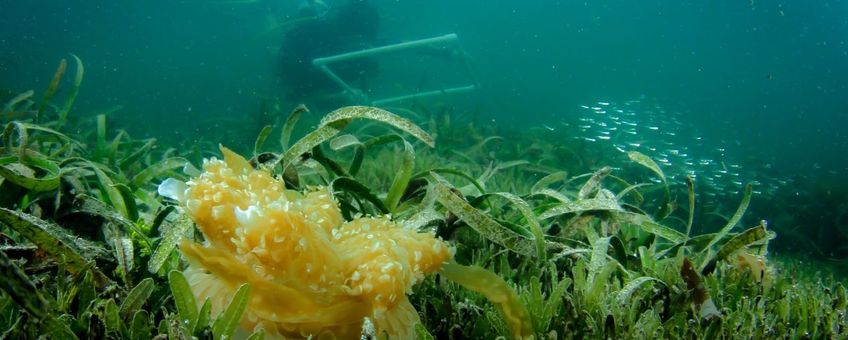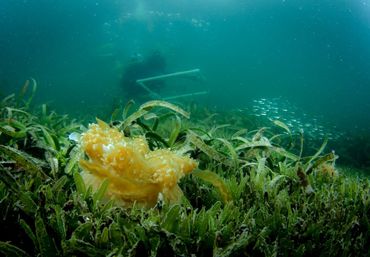
Invasive seagrass and native upside-down jellyfish are battling for space
Wageningen Environmental Research, Wageningen University & ResearchThe seagrass can quickly colonize new habitats because small fragments break off, remain viable and spread via currents. In the new paper Battle for the mounds: Niche competition between upside-down jellyfish and invasive seagrass published in the scientific journal Ecology, the researchers report on their discovery that the invasive seagrass uses little mounds - created by burrowing animals as shrimp or seacucumbers - as a new habitat to settle and expand from. The mounds provide new space with sufficient light, opening up the dense meadows of native seagrass where the invasive seagrass otherwise cannot settle. From there, they observed that the invasive seagrass can spread.
High and open locations are in demand
But the researchers also found that this can cause problems for native species. “The upside-down jellyfish (Cassiopea spp) lies upside down because it has photosynthetic algae in its tentacles. Therefore, these organisms also need light and prefer open spaces such as these mounds created by burrowing animals,” according to Fee Smulders of Wageningen  University & Research, and lead author of the study. "Msc student Naomi Slikboer recorded the presence of both invasive seagrass and upside-down jellyfish on many of these mounds on the island of Curaçao. She found that often the invasive seagrass pushes the upside-down jellyfish out of these habitats over time.”
University & Research, and lead author of the study. "Msc student Naomi Slikboer recorded the presence of both invasive seagrass and upside-down jellyfish on many of these mounds on the island of Curaçao. She found that often the invasive seagrass pushes the upside-down jellyfish out of these habitats over time.”
Jellyfish move away more often
This probably increases the energetic costs for the jellyfish as it has to move more often due to rapid overgrowth of H. stipulacea. Additionally, the authors hypothesize that the interplay between invasive seagrass and burrowing mounds will lead unstable, dynamic seagrass meadows, unfavorable for valuable native seagrass species. Smulders: “We need to keep a close watch on this invasive seagrass and investigate the impact on both native species as well as the seascape patch dynamics in Caribbean seagrass meadows.”
More information
- The article Battle for the mounds: Niche competition between upside-down jellyfish and invasive seagrass in the scientific journal Ecology.
Text: Wageningen Environmental Research
Photo: Erik Wurz
